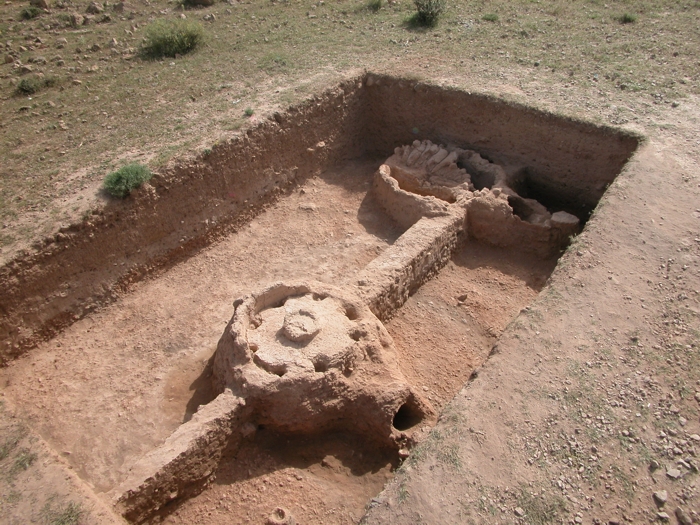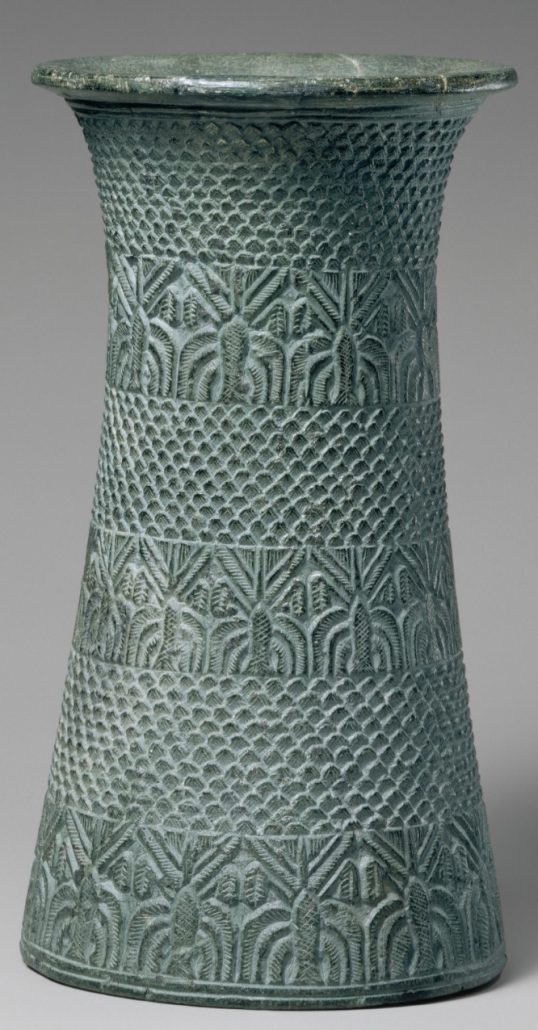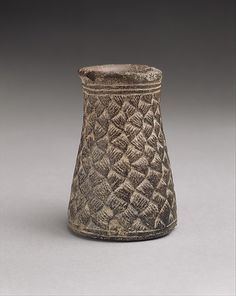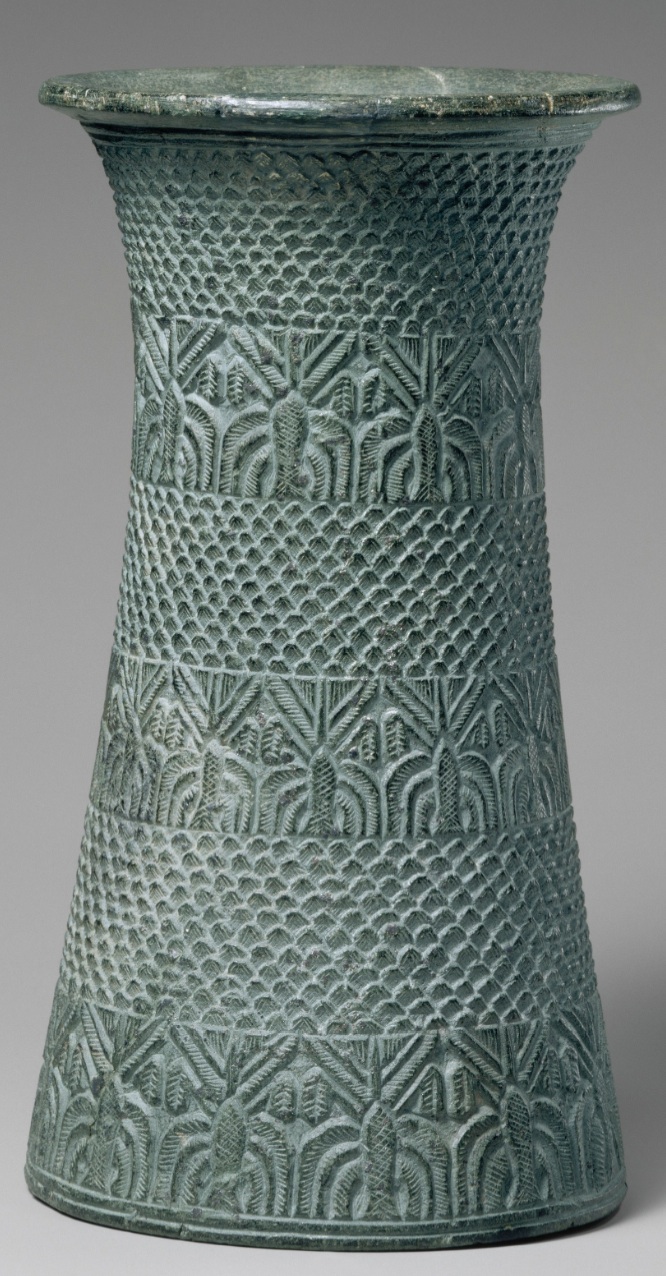The report below was originally posted in the Iran Daily News and Payvand News outlets on January 6, 2017. Kindly note that none of the images and accompanying captions inserted below appear in the original Iran Daily and Payvand News reports.
= = = = = = = = = = = = = = = = = = = = = = = = = = = = =
Objects unearthed in the historical site of Tom Maroon, in Hormuzgan Province on the Persian Gulf, indicate that the communities inhabiting the region during the Bronze Age were involved in industrial activities such as metalwork, glass-work and pottery.
Research Institute of Iran’s Cultural Heritage, Handicrafts and Tourism Organization quoted head of the excavation team Siamak Sarlak, as saying that that archaeologists came across two oval furnaces, welding parts, furnace slag iron and glass pieces during their excavations.

Remains of an ancient Kiln in southwest Iran He further noted that among the objects included a glass button-like seal which can be important in analyzing economic relations between Tom Maroon and other regions during that era. He listed the aims of the current season of excavations as identifying the succeeding cultural eras of the region, drawing up a chronology of the area and defining the role and importance of the area in the shaping cultural relations of communities inhabiting the northern and southern shores of the Persian Gulf in the Bronze Age up to the Islamic era. Sarlak cited other objectives of the excavations as understanding the instinctive features of the region in developing the cultural outlook of communities residing in the region, particularly in the Bronze Age, conducting research works in cultural-historical area of the Persian Gulf, and collecting fresh documents with the aim of clarifying the historical position and importance of the Persian Gulf. Chlorite Stone Vase from southern Iran along the Persian Gulf region (dated to c. mid-late 3rd millennium BCE) (Source: Pinterest). Note the three bands of palm trees and the overlapping artwork pattern. The third phase of the explorations were predicted to be launched by mid-March 2017 given the cultural features of the region and the coordination with the Archeology Institute and Hormuzgan Cultural Heritage Department, he added. Sarlak pointed out that in the second season of the excavations approximately 7.5 meters of the accumulated layers and cultural objects of the area were surveyed. He added that nine main and two sub-phases of the architecture of the Parthian era were also identified. Based on the documents obtained in the exploration of Tom Maroon, Sarlak noted that the most important construction material used in the architecture of the Parthian era is large-size adobes using clay mortar. He said up to three decades ago, there were five satellite mounds around Tom Maroon which have now been completely leveled to the ground and transformed into citrus orchards and currently only a small portion of Tom Soltan Miran, 800 meters from Tom Maroon, remained intact. Ancient bronze-age chlorite vase from southern Iran (Source: Fattaneh Wilcox in Pinterest). The archaeologist stressed that based on the documents obtained in the excavations on the southern slopes of Tom Maroon, four cultural periods, including the ancient Bronze era, the Parthian era, the Sassanid era and the early centuries of the Islamic period have been identified. He said the Persian Gulf is considered one of the important regions in archaeological studies of Iran and ancient Orient in view of its strategic location. Archaeological studies conducted in Hormuzgan, the Old Stone Age, the ancient Bronze era, the Parthian, the Sassanid and the Islamic periods (especially the Safavid) show that thriving cultures and civilizations existed in the region. Tom Maroon is located in Hormuzgan Province in a fertile alluvial plain, known as Komiz Plain, surrounded by low mountains.





